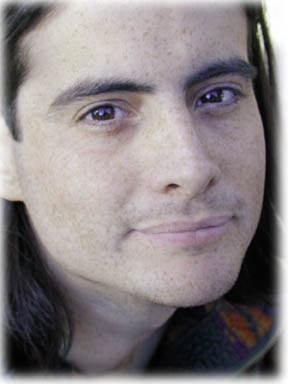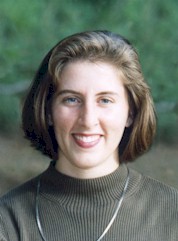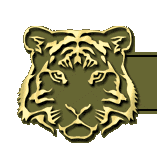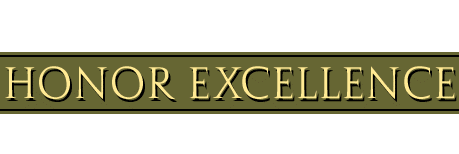
 
 











|
Select below for information on artists:
|
|
|
|

|
Joseph Vaca sculpts
endangered species because he wants to help them, and other
animals because he admires their strengths
and vulnerabilities.
|
|
An Article by
Martha Buskirk
Reprinted from the
May/June 1998 edition of
Figurines and Collectibles |
JOSEPH VACA GOES THROUGH RESEARCH
PHASES. Sometimes, in a bookish mood, he haunts the reference sections of libraries. Other
times he visits his animal subjects either in captivity or in the wild. It takes him
weeks, or even months, of preparation before he goes to his work table to bring his ideas
to life, first in wax, then in bronze.
"My sculptures first manifest themselves in my dreams,"
Vaca says. "I work with the animals to learn about them and focus on transferring
their energy, be it proud and strong or nurturing and vulnerable, directly into the medium
[wax]. I do not just wake up and say, 'Okay, today is elephant day.'"
Now in his twenties, Vaca discovered art as a child. He was
diagnosed with cancer at age seven, which led to surgery, years of chemotherapy, and a lot
of bedridden time to think. "From that time forward, I spent all my energy studying
art and art-related skill," he says. "After sampling all mediums, I was
introduced to bronze and finally felt like I had arrived home. |
"During that time, I was called to make a very
important decision: what subject is important enough to me to manifest through the
powers of earth and fire in an ageless medium? It was that call that focused my energies
on the plight of endangered species, and my whole life has revolved around that ever
since."
In March 1997 Vaca joined the Board
of Directors of Africa Environment 2000, a nonprofit organization which raises public
awareness about the plight of the endangered black rhinoceroses, environmental
sustainability, and the cultural ties between the United States and Africa. He works
directly with the founder of the organization and contributes a percentage of his
sculpture sales to support the foundation. "Life on earth is changing so quickly, I
want to preserve a sense of the beings that are with us today, the animals," he says
of his conservation efforts. "In doing so, I am able to contribute their presence
into our lives and cause positive effects for the animals through viable, sustainable
conservation efforts such as Africa Environment 2000, The Gorilla Foundation, and Redwings
Horse Sanctuary.” |
 Risky Business and
Rise to the Occasion
are cold-cast bronze bookends.
The
edition has been retired. |


Anonymous the Rhinoceros,
24 by 7 by 9 inches,
depicts Vaca's
"power" animal |
Before becoming a professional sculptor, Vaca was a
conservator at Runnymede Sculpture Farm in Woodside, California. While there he maintained
and studied 160 modern art works, and examined their relation to the environment. Leaving
that job to pursue a career as a sculptor "has been full of challenges," he
says. "I currently take on design jobs and develop trophies and awards for
corporations to honor excellence in human performance, as well as creating collectible
sculpture."
During his time at Runnymede, Vaca participated in an Andy
Goldsworthy installation and came to respect the artist for "the joy and talent he
brings to his relationship to the Earth." He also admires artist Richard Long for
"his journeys upon the Earth and the relationship that he nurtures through direct
experience."
Vaca says he will always be a bronze sculptor at heart, and has
experimented with cold-cast bronze as well as solid bronze sculptures. Interestingly,
however, Vaca himself sculptures in wax. "The original creations are in wax,"
he explains. "I work almost entirely in wax. Later,
through mold processes, I create the bronze. The bronze casting is completed at a variety
of Bay-area foundries so that I can focus on the wax. It is all in the original.
According to Rick Nunex of Nature’s Bounty in
Carmel-by-the-Sea, California, there is a real market for Vaca’s animal sculptures.
He cites "collectors of animals, people who are involved with nature and nature
conservation, and interior designers using a nature theme" as buyers of Vaca’s
realistic animal pieces.
Known for incorporating texture into the surfaces of his
sculptures, Vaca proudly tells of a blind customer who visits a Modesto, California, store
weekly to "view" his work. "To her, it is a 'painting for the blind,'"
says Vaca. Another collector has told Vaca how his three-year-old granddaughter loves to
spend hours admiring his Vaca animal collection. "These are my greatest
compliments," says the artist. "I want people to interact and develop a
relationship to my work for now and for generations." |


Joy Munshower
Sculptor
|
Joy Munshower's sculptures, all executed with
imagination and vitality, range from wildlife to fantasy and figurative. Joy's knowledge
of animal anatomy and attention to surface detail is due to her extensive studies of
zoology, anatomy, physiology and experience as a technical illustrator. |
Joy
Munshower, who holds a Bachelor
of Arts degree from San Jose State University, began her sculpting career in 1995. Joy
creates sculptures in bronze, welded steel, ceramic and resin. Her sculpture and
illustrations have been exhibited in several galleries, yet the majority of her work has
been privately commissioned.
Born in Fresno, California and raised in the San Joaquin Valley,
Joy now spends most of her time in the Bay Area, continuing her studies in Art at Silicon
Valley schools as well as overseas.
|
|
|


